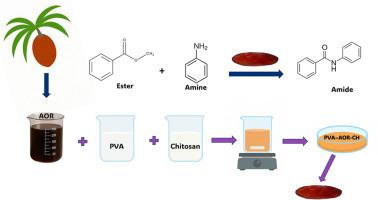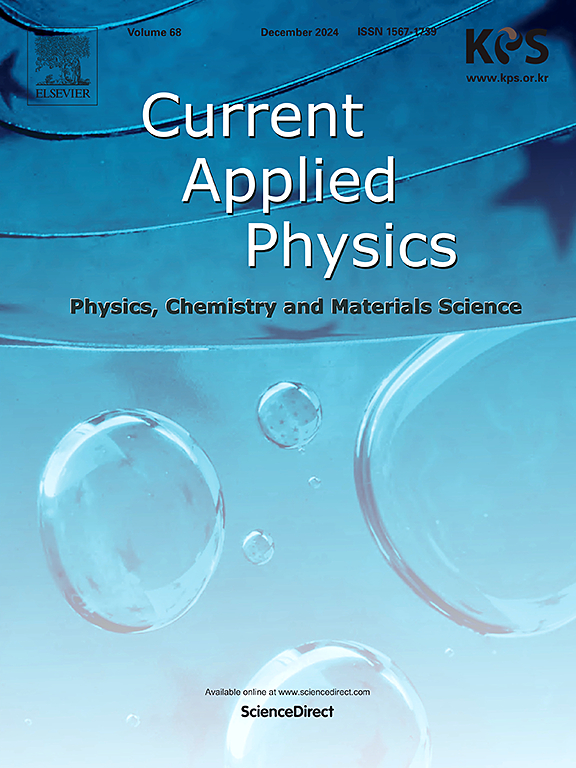槟榔有机残留物增强聚合物薄膜:酰胺化反应的高效催化剂
IF 3.1
4区 物理与天体物理
Q3 MATERIALS SCIENCE, MULTIDISCIPLINARY
引用次数: 0
摘要
本研究介绍了一种创新的方法来重新利用农业副产品作为化学合成的催化剂,解决废物处理的挑战。以未开发利用的槟榔有机渣为原料,与聚乙烯醇(PVA)和壳聚糖共混制备复合膜。采用溶剂铸造和热固化的方法合成了薄膜,并对实验参数进行了系统优化。物理化学表征证实了组件的成功集成和揭示的结构性质。在药物合成的关键反应酰胺合成中,评价了膜的催化效率。1.5 g聚乙烯醇、0.3 g壳聚糖和1 mL槟子渣的混合物在酯胺反应中获得了95%的收率,这归因于聚合物基质和反应位点之间的协同作用。膜具有优异的可重复使用性,在三个循环中保持催化效率。这项研究强调了槟榔渣基复合材料作为工业相关转化的可持续、高效催化剂的潜力。本文章由计算机程序翻译,如有差异,请以英文原文为准。

Arecanut organic residue-enhanced polymer films: An efficient catalyst for amidation reactions
This research introduces an innovative approach to repurpose agricultural by-products as catalysts in chemical synthesis, addressing waste disposal challenges. Composite films were developed using arecanut organic residue, an underexploited by-product, blended with polyvinyl alcohol (PVA) and chitosan. The films were synthesized through solvent casting and thermal curing, with experimental parameters systematically optimized. Physicochemical characterization confirmed successful integration of components and revealed structural properties. The catalytic efficiency of the films was evaluated in amide synthesis, a key reaction in pharmaceuticals. A blend of 1.5 g PVA, 0.3 g chitosan, and 1 mL arecanut residue achieved a 95 % yield in ester-amine reactions, attributed to synergistic interactions between the polymer matrix and reactive sites. The films exhibited excellent reusability, maintaining catalytic efficiency over three cycles. This study highlights the potential of arecanut residue-based composites as sustainable, efficient catalysts for industrially relevant transformations.
求助全文
通过发布文献求助,成功后即可免费获取论文全文。
去求助
来源期刊

Current Applied Physics
物理-材料科学:综合
CiteScore
4.80
自引率
0.00%
发文量
213
审稿时长
33 days
期刊介绍:
Current Applied Physics (Curr. Appl. Phys.) is a monthly published international journal covering all the fields of applied science investigating the physics of the advanced materials for future applications.
Other areas covered: Experimental and theoretical aspects of advanced materials and devices dealing with synthesis or structural chemistry, physical and electronic properties, photonics, engineering applications, and uniquely pertinent measurement or analytical techniques.
Current Applied Physics, published since 2001, covers physics, chemistry and materials science, including bio-materials, with their engineering aspects. It is a truly interdisciplinary journal opening a forum for scientists of all related fields, a unique point of the journal discriminating it from other worldwide and/or Pacific Rim applied physics journals.
Regular research papers, letters and review articles with contents meeting the scope of the journal will be considered for publication after peer review.
The Journal is owned by the Korean Physical Society.
 求助内容:
求助内容: 应助结果提醒方式:
应助结果提醒方式:


